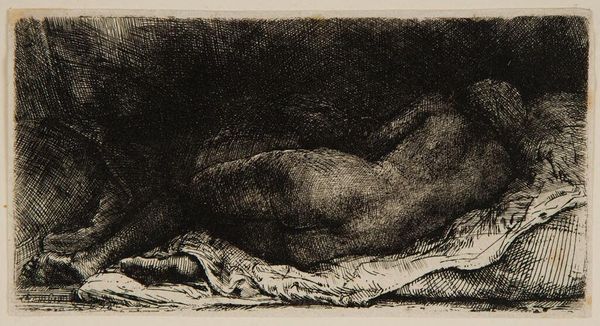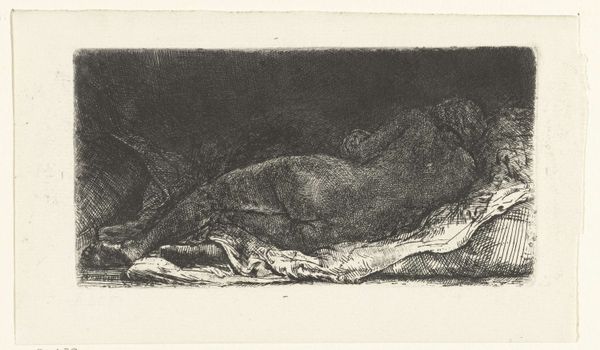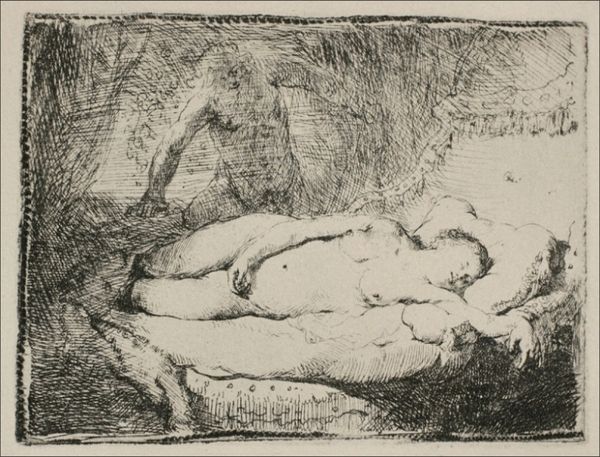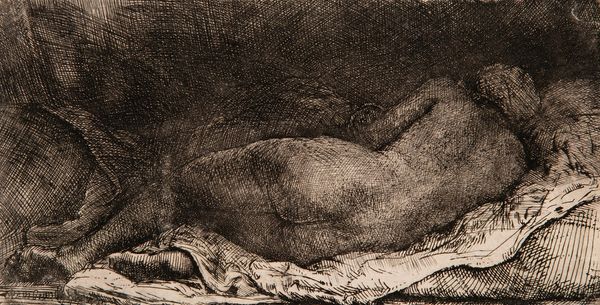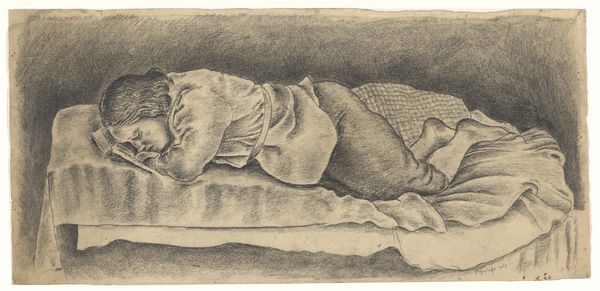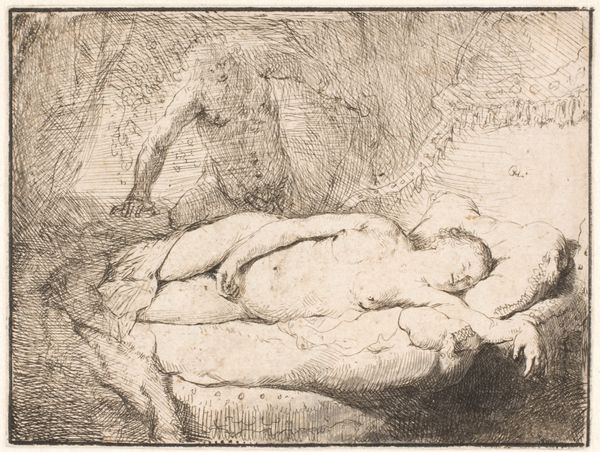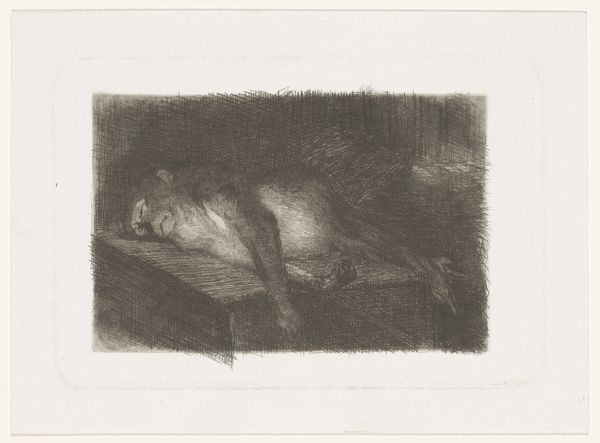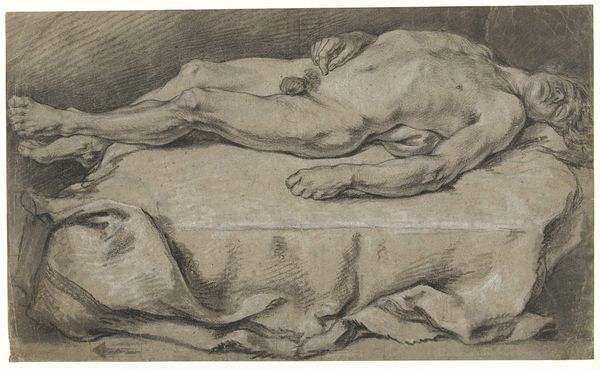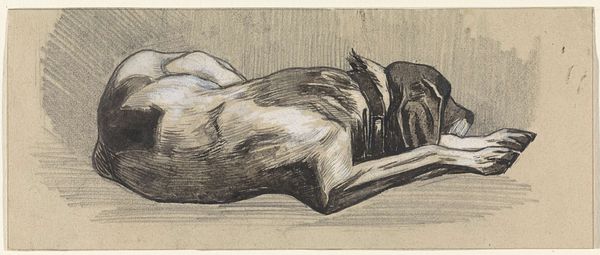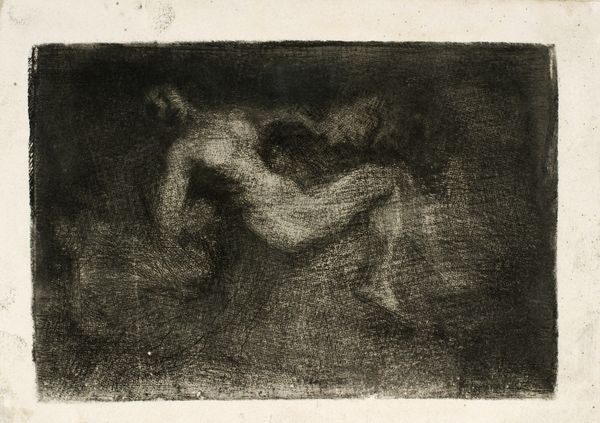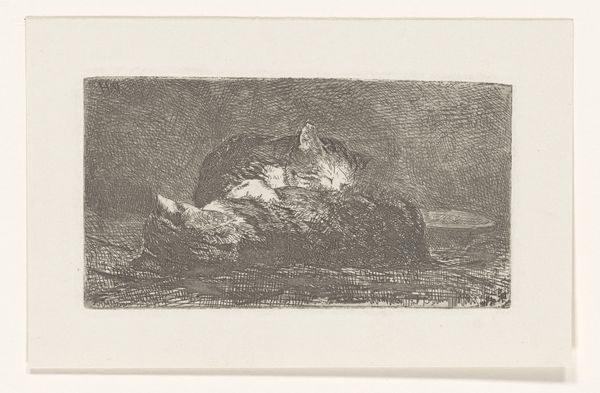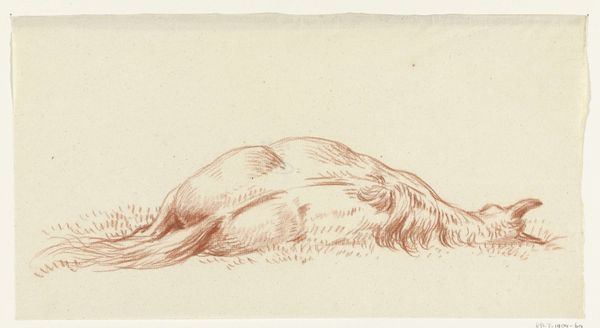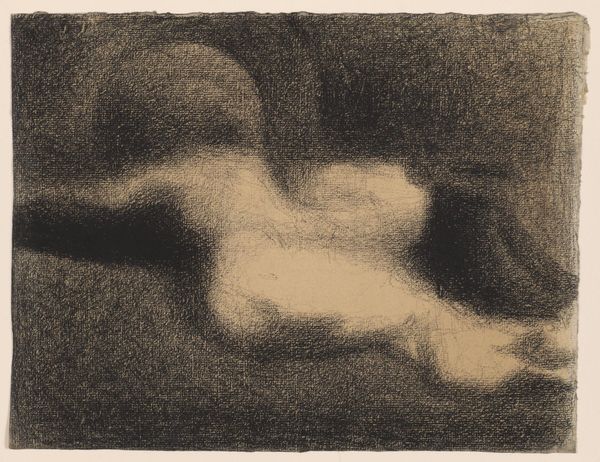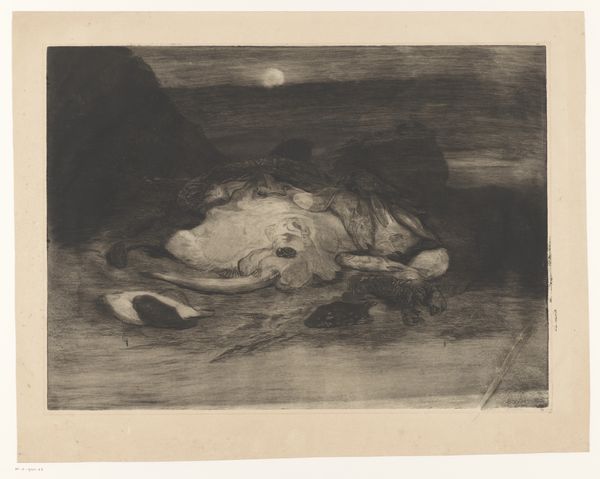
drawing, print, etching, paper, ink, engraving
#
drawing
#
baroque
# print
#
etching
#
paper
#
ink
#
nude
#
engraving
Dimensions: 81 × 158 mm (sheet trimmed to platemark)
Copyright: Public Domain
Editor: Here we have Rembrandt van Rijn's "Reclining Female Nude," made in 1658. It's an etching, small and quite dark. What do you see in this piece, especially considering its historical context? Curator: I see a challenge to idealized beauty standards and a potential commentary on power dynamics of the time. Consider, the Baroque period was rife with often exaggerated displays of wealth and beauty, but Rembrandt chooses a different path here. He represents a woman with visible, natural imperfections, in a relaxed pose. How might her reclining position play into or subvert the traditional male gaze in art? Editor: That’s a great question! I guess most nudes are idealized and posed to be looked *at*, while this feels… different. More intimate. Curator: Precisely. Instead of offering the viewer easy gratification through idealization, Rembrandt encourages contemplation. Does the print’s darkness emphasize vulnerability? Does it perhaps reflect societal attitudes towards the female body? What could the rumpled fabric signify about the depicted woman's life and status, as distinct from a more luxurious setting? Editor: It makes me wonder about the models and their place in Rembrandt’s world. Were they involved in how they were portrayed, or was it purely at the whim of the male artist? Curator: An important question! Rembrandt's approach to portraying diverse bodies—rather than standard, sanitized forms—can be read as an attempt to humanize his subjects. But that interpretation also needs to be critically examined within the larger frame of historical power dynamics and who gets to control the narrative. It opens up dialogues about representation, agency, and the enduring gaze. Editor: I see, so much to think about, especially regarding how we continue to view and interpret art through contemporary lenses. Curator: Absolutely. Art history isn’t a static narrative, it's a continuous dialogue with the past, shaping our present and influencing the future.
Comments
rijksmuseum about 2 years ago
⋮
This woman was long thought to be African; however, this is almost certainly not the case. It is plausible that Rembrandt, the master of light and dark, took on an artistic challenge: namely, how to depict the model’s skin when she is lying in a dark closetbed? Noteworthy is the fact that virtually all of Rembrandt’s female models wear a little cap – here, too.
Join the conversation
Join millions of artists and users on Artera today and experience the ultimate creative platform.
